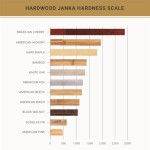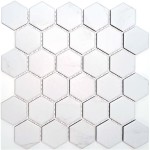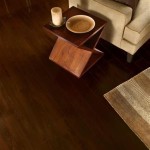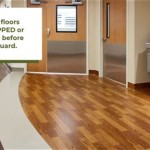Is Laminate Flooring Safe For Health? A Comprehensive Guide
Laminate flooring has become a popular choice for homeowners and businesses alike, offering a cost-effective and aesthetically pleasing alternative to hardwood, tile, and other flooring materials. Its durability, ease of maintenance, and wide variety of styles contribute to its widespread adoption. However, concerns about the potential health impacts of laminate flooring have also surfaced, particularly regarding its composition and the substances released during its manufacturing and lifespan. This article provides a comprehensive overview of the safety considerations associated with laminate flooring, addressing potential hazards and outlining factors that influence its impact on indoor air quality and overall health.
Understanding the composition of laminate flooring is crucial to evaluating its safety profile. Laminate flooring typically consists of four layers: a wear layer, a decorative layer, a core board, and a backing layer. The wear layer, often made of aluminum oxide, provides resistance to scratches, stains, and fading. Beneath the wear layer lies the decorative layer, a high-resolution photographic image that mimics the appearance of wood, stone, or other materials. The core board, usually made of high-density fiberboard (HDF) or medium-density fiberboard (MDF), provides the structural stability of the flooring. Finally, the backing layer provides a moisture barrier and helps to balance the flooring.
The potential health concerns associated with laminate flooring primarily stem from the core board and the adhesives used in its construction. HDF and MDF core boards are typically manufactured using formaldehyde-based resins as binders. Formaldehyde is a known volatile organic compound (VOC) that can off-gas into the indoor air, potentially causing adverse health effects. In addition, some laminate flooring products may contain other VOCs, such as benzene, toluene, ethylbenzene, and xylene (BTEX), which are released from adhesives and other components.
The health effects of VOC exposure can vary depending on the concentration, duration of exposure, and individual susceptibility. Short-term exposure to high levels of VOCs can cause eye, nose, and throat irritation, headaches, dizziness, and nausea. Long-term exposure to even low levels of certain VOCs has been linked to more serious health problems, including respiratory illnesses, neurological damage, and even cancer.
Formaldehyde Emissions and Regulations
Formaldehyde emissions are a primary concern when evaluating the health safety of laminate flooring. Formaldehyde is a colorless gas with a pungent odor and is classified as a known human carcinogen by several international organizations. Exposure to formaldehyde can cause a range of health problems, from minor irritations to more severe respiratory and neurological effects.
Recognizing the potential health risks associated with formaldehyde, regulatory bodies have established standards and regulations to limit formaldehyde emissions from building materials, including laminate flooring. In the United States, the California Air Resources Board (CARB) has implemented strict formaldehyde emission standards under its Airborne Toxic Control Measure (ATCM) for composite wood products. CARB Phase 2 standards are widely recognized as the most stringent in the world and are often used as a benchmark for formaldehyde emissions from laminate flooring.
The CARB Phase 2 standard specifies a maximum formaldehyde emission limit of 0.05 parts per million (ppm) for HDF core boards used in laminate flooring. To comply with this standard, manufacturers must use low-formaldehyde resins or implement other measures to reduce formaldehyde emissions during the manufacturing process. Laminate flooring products that meet CARB Phase 2 standards are typically labeled as such, providing consumers with assurance that the product has been tested and certified to meet the stringent emission requirements.
Beyond CARB, the U.S. Environmental Protection Agency (EPA) also regulates formaldehyde emissions from composite wood products under the Formaldehyde Standards for Composite Wood Products Act. This act aligns with the CARB Phase 2 standards and requires manufacturers to comply with similar emission limits. Many other countries have also established their own standards and regulations for formaldehyde emissions from building materials.
When selecting laminate flooring, it is essential to look for products that are certified to meet CARB Phase 2 or equivalent standards. These certifications indicate that the product has been tested and verified to emit formaldehyde at levels that are considered safe. Consumers can also look for products that are labeled as "ultra-low formaldehyde" (ULF) or "no added formaldehyde" (NAF), which indicates that the product is made with resins that do not contain formaldehyde or that the formaldehyde emissions are extremely low.
VOCs Beyond Formaldehyde: Understanding the Release of Other Volatile Compounds
While formaldehyde emissions are a major focus, it is important to recognize that laminate flooring can also release other VOCs into the indoor environment. These other VOCs can originate from adhesives, coatings, and other components of the flooring. The specific types and concentrations of VOCs released can vary depending on the manufacturer, the materials used, and the manufacturing processes employed.
Some common VOCs that may be released from laminate flooring include benzene, toluene, ethylbenzene, and xylene (BTEX). These compounds are often used as solvents in adhesives and coatings. Exposure to BTEX compounds can cause a range of health effects, including headaches, dizziness, respiratory irritation, and neurological damage. Long-term exposure to high levels of BTEX has been linked to an increased risk of cancer.
Other VOCs that may be present in laminate flooring include aldehydes, such as acetaldehyde and glutaraldehyde, which can be released from resins and other materials. Aldehydes can cause respiratory irritation, skin sensitization, and other health problems. The total VOC (TVOC) level is often used as a general indicator of indoor air quality. High TVOC levels can indicate the presence of a variety of VOCs and may be associated with adverse health effects.
To minimize exposure to VOCs from laminate flooring, it is essential to choose products that are certified to meet low-VOC emission standards. Some certifications, such as FloorScore and GREENGUARD, test for a wide range of VOCs and ensure that the product meets stringent emission limits. These certifications provide consumers with assurance that the product has been independently tested and verified to have low VOC emissions.
Proper ventilation is also crucial for reducing VOC levels in indoor environments. After installing new laminate flooring, it is recommended to ventilate the area thoroughly by opening windows and doors and using fans to circulate air. This can help to dissipate VOCs that are released from the flooring during the initial off-gassing period.
Factors Influencing VOC Emissions and Mitigation Strategies
Several factors can influence the rate and amount of VOCs released from laminate flooring. These factors include temperature, humidity, ventilation, and the age of the flooring. Higher temperatures and humidity levels can increase the rate of VOC emissions. Poor ventilation can trap VOCs in the indoor environment, leading to higher concentrations.
The age of the flooring can also affect VOC emissions. New laminate flooring typically releases VOCs at a higher rate than older flooring. Over time, the rate of VOC emissions tends to decrease as the VOCs are gradually released from the flooring. However, some VOCs may continue to be released for years, particularly in poorly ventilated areas.
To mitigate VOC emissions from laminate flooring, several strategies can be employed. As mentioned earlier, choosing low-VOC certified products is the most effective way to minimize VOC exposure. In addition, proper ventilation is essential for removing VOCs from the indoor environment. Air purifiers with activated carbon filters can also help to remove VOCs from the air.
Sealing the edges and seams of laminate flooring can help to prevent VOCs from escaping into the indoor air. Using a low-VOC sealant is recommended. Maintaining a moderate temperature and humidity level in the indoor environment can also help to reduce VOC emissions. Regular cleaning of the flooring with a damp mop and a mild detergent can help to remove dust and other particles that may trap VOCs.
Before installing new laminate flooring, consider allowing the flooring to acclimate to the indoor environment for several days. This can help to reduce the initial off-gassing of VOCs. Open the packaging and spread out the flooring in a well-ventilated area to allow the VOCs to dissipate before installation.
Individuals who are particularly sensitive to VOCs, such as pregnant women, infants, and people with respiratory problems, may want to take extra precautions when choosing and installing laminate flooring. Consult with a medical professional or an environmental health specialist for advice on minimizing VOC exposure.
In conclusion, while laminate flooring can offer numerous benefits, it's crucial to be aware of the potential health concerns related to VOC emissions, particularly formaldehyde. By selecting certified low-VOC products, ensuring proper ventilation, and implementing mitigation strategies, it's possible to significantly reduce the risk of adverse health effects and create a safer indoor environment.

Is Laminate Flooring Safe For Health Singapore

The Ultimate Guide To Non Toxic Flooring Atkinson Kirby
The Ultimate Guide To Non Toxic Flooring Atkinson Kirby

Is Laminate Flooring Safe For Health Singapore Interior Design

The Ultimate Guide To Non Toxic Flooring Atkinson Kirby

Lumber Liquidators Flooring Warning 7 15 2025

Disadvantages Of Laminate Wood Flooring Key Drawbacks

How To Choose A Non Toxic Engineered Wood Floor

3 Health Benefits Of Hardwood Floors Atkinson Kirby

Scratch Free Laminate Floors Simple Tips To Protect Your Flooring
Related Posts








